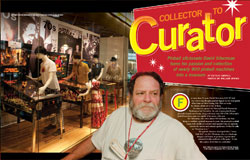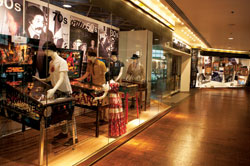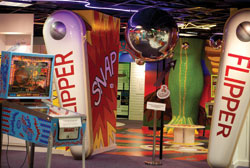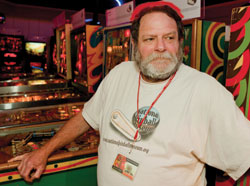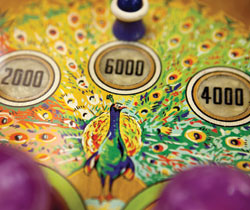Collector to Curator
Pinball aficionado David Silverman turns his passion and collection of nearly 900 pinball machines into a museum.
For more than 20 years, David Silverman, MA '87, had two 9-foot-long fiberglass pinball flippers on the front porch of his home in Silver Spring, Md. With no room for display, plants sat on top of them.
But when he opened the National Pinball Museum in Washington last December, the pair of giant pinball paraphernalia found a new home, along with more than 100 of Mr. Silverman's pinball machines—just one-eighth of his entire collection.
Mr. Silverman, who owns almost 900 machines, has been trying to establish a pinball museum for years. His passion for pinball began with childhood curiosity and expanded into an appreciation for the history and cultural significance of what he calls an "American icon."
"My pinball obsession developed when I was a little kid," says Mr. Silverman, who, as a landscape designer and former art professor, is particularly interested in the aesthetics of the game. "It was like a piece of art that you could play."
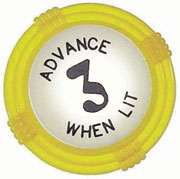 Years ago, when Mr. Silverman's collection of pinball machines surpassed 200 and he had buildings constructed in his backyard to store them, he started getting serious about a museum. He had been going to national conventions and researching pinball but found a lack of literature and resources devoted to the game.
Years ago, when Mr. Silverman's collection of pinball machines surpassed 200 and he had buildings constructed in his backyard to store them, he started getting serious about a museum. He had been going to national conventions and researching pinball but found a lack of literature and resources devoted to the game.
"That's when I decided: I think my collection should become a museum," Mr. Silverman says.
His 14,000-square-foot space takes visitors through pinball's little-known history. It's a journey that stretches back to the game's origins in 1777 in France (pinball's ancestor was a game called Bagatelle that looked like a long, narrow pool table in which balls were propelled with cue sticks).
"Most people play pinball and think that pinball is just a game," Mr. Silverman says, noting that cultural trends and major events in American history are reflected in pinball machine themes, such as the patriotic pinball games that emerged during World War II.
"I'm trying to make people aware that this is an American pastime; this is an art form. Of course it's a game, but it also has a history quite long that most people don't know."
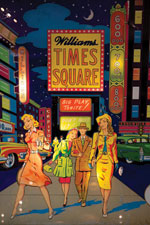 For instance, many probably don't know that pinball was once outlawed. In the 1940s, cities across the country banned the game because of its association with gambling. Spectacularly, a man named Roger Sharpe convinced the New York City Council to legalize pinball in 1976 by predicting—and making—his shot on a pinball machine in a Manhattan courtroom. It proved that pinball was a game of skill, not chance.
For instance, many probably don't know that pinball was once outlawed. In the 1940s, cities across the country banned the game because of its association with gambling. Spectacularly, a man named Roger Sharpe convinced the New York City Council to legalize pinball in 1976 by predicting—and making—his shot on a pinball machine in a Manhattan courtroom. It proved that pinball was a game of skill, not chance.
The museum also takes visitors through pinball milestones including the first flipper (on the Humpty Dumpty game in a fairy tale series of machines), first bumpers, and first inclusion of sound in the game.
Dozens of wood rail games from the 1940s to 1960s are lined up in the "Golden Age of Pinball" room, and some are still functioning. A "Pay to Play" room of more modern games, including the popular Addams Family, Indiana Jones, and Star Trek pinball machines, are all available to play.
The museum also includes pinball art exhibits, a theater and a library, and Mr. Silverman is fundraising to outfit classroom space.
"Pinball is our pastime," Mr. Silverman says. "It helps complete—in a game form—our own history."
Note: As this issue was going to press, Mr. Silverman learned that the mall's new owners are revoking his lease and redeveloping the space. The museum is open until July 4 and Mr. Silverman is looking for a different location. For more information about the museum and Mr. Silverman's efforts to relocate, visit www.nationalpinballmuseum.org.
|
|

